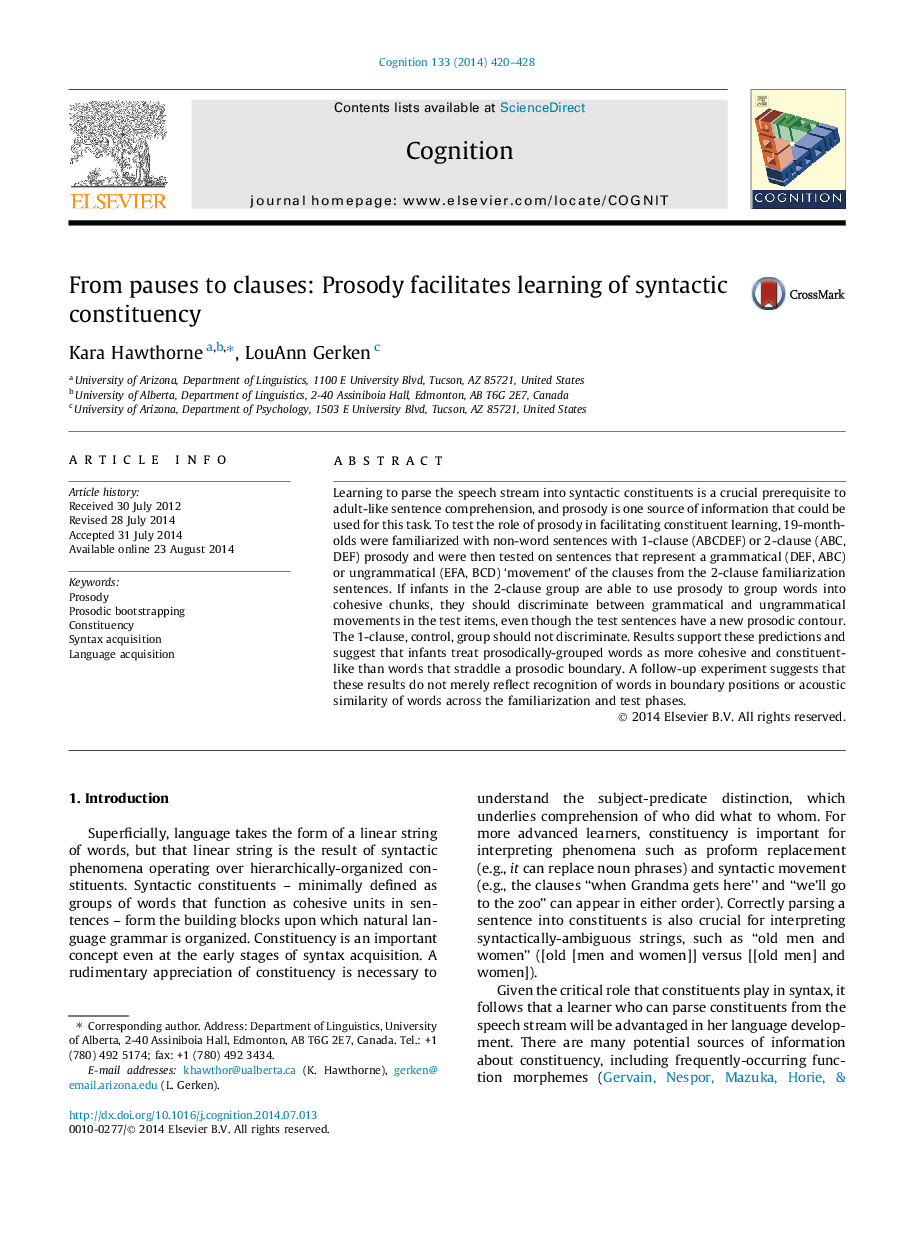| Article ID | Journal | Published Year | Pages | File Type |
|---|---|---|---|---|
| 10457509 | Cognition | 2014 | 9 Pages |
Abstract
Learning to parse the speech stream into syntactic constituents is a crucial prerequisite to adult-like sentence comprehension, and prosody is one source of information that could be used for this task. To test the role of prosody in facilitating constituent learning, 19-month-olds were familiarized with non-word sentences with 1-clause (ABCDEF) or 2-clause (ABC, DEF) prosody and were then tested on sentences that represent a grammatical (DEF, ABC) or ungrammatical (EFA, BCD) 'movement' of the clauses from the 2-clause familiarization sentences. If infants in the 2-clause group are able to use prosody to group words into cohesive chunks, they should discriminate between grammatical and ungrammatical movements in the test items, even though the test sentences have a new prosodic contour. The 1-clause, control, group should not discriminate. Results support these predictions and suggest that infants treat prosodically-grouped words as more cohesive and constituent-like than words that straddle a prosodic boundary. A follow-up experiment suggests that these results do not merely reflect recognition of words in boundary positions or acoustic similarity of words across the familiarization and test phases.
Related Topics
Life Sciences
Neuroscience
Cognitive Neuroscience
Authors
Kara Hawthorne, LouAnn Gerken,
